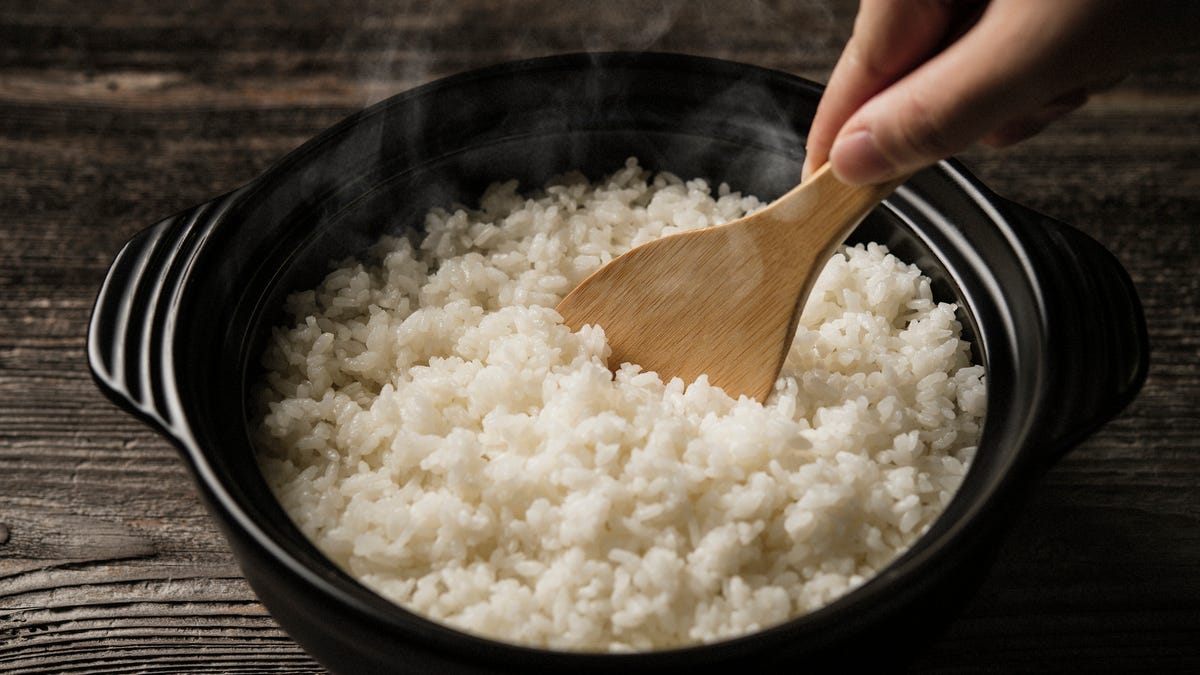[ad_1]
Food preparation is a great way to save money, watch your weight and get food on the table fast. You never have to figure out what to eat, which is a pretty big plus these days. But if rice is a regular component of your meal prep strategy, you may be at risk of food poisoning.
It can be tempting when you’re too busy to cook, but eating leftover rice that’s been sitting in the fridge for a few days can be more trouble than it’s worth. There’s a small (but very real) chance that this could give you food poisoning (sometimes known as “fried rice syndrome”). The best thing to do? Toss it before you’re tempted—or you could find yourself facing some nasty side effects.
Here’s why you might want to avoid making a large batch of rice for the next week, and how you can properly store and cook rice to prevent possible food poisoning.
For more health tips, here they are eight tips to quit drinking that really work and why you should add more carbs to your diet. And here’s our tip for buying the best rice cookers.
Why does leftover rice pose a risk of food poisoning?
All varieties of uncooked rice can contain spores of Bacillus cereus, a bacterium that can cause gastrointestinal illnesses such as vomiting or diarrhea. Spores are heat resistant and do not die when cooked. As the rice cools down and enters the food danger zone between 40 and 140 degrees Fahrenheit, the bacterium begins to multiply rapidly. There are about 63,400 cases of food poisoning from Bacillus cereus in the U.S. each year. according to the Cleveland Clinic.
The big risk of food poisoning occurs when the rice sits for more than an hour – then the bacteria spores can multiply significantly. Bacteria is not a problem if you eat the rice right away. Illness is much more common when eating rice that has been at room temperature for several hours, cooled, and then eaten several days later. If your rice sits for two hours at room temperature or one hour at 90 degrees Fahrenheit, it should be thrown away, according to Food web.
What is the best way to store rice to avoid food poisoning?
To prevent food poisoning, you should refrigerate leftover rice soon after you finish cooking it – UK NHIF recommends storing it “ideally within an hour” – and limit the amount of time your leftover rice is in the fridge.
However, you should be careful not to put a hot container of food in the refrigerator, as this can raise the temperature of other foods and possibly cause bacteria to grow there as well. Food web recommends portioning the large batch of rice into smaller containers and cooling the rice to room temperature (about 70 degrees).
The NHS recommends keeping your rice in the refrigerator for no more than a day until rewarmed, while the USDA FoodKeeper app says you can store cooked rice for four to six days. Food Network says you can continue to reheat rice for the three to four days it has been stored, while the NHS recommends not reheating more than once.
What is the safest way to reheat leftover rice?
If you plan to reheat your rice, make sure the rice comes out of the microwave or stovetop hot with an internal temperature of 165 Fahrenheit or higher. And the next time you’re craving rice, limit the amount you make to what you and your dinner companions plan to eat that day. This also helps prevent food waste, along with the benefits of avoiding food poisoning.
[ad_2]
